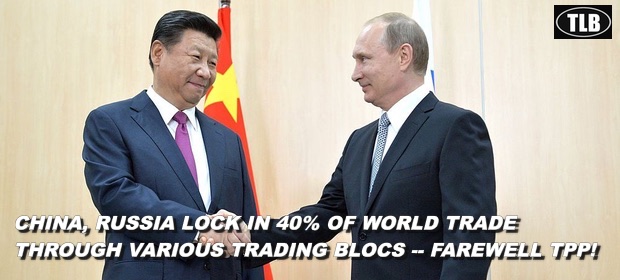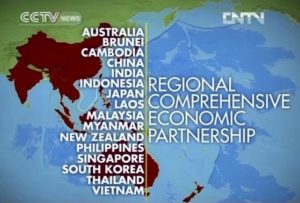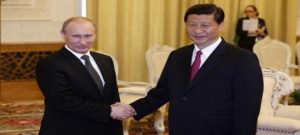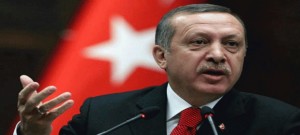
All Aboard the Post-TPP World
PEPE ESCOBAR
A half-hearted near handshake between US President Barack Obama and Russian President Vladimir Putin before and after they spoke «for about four minutes», standing up, on the sidelines of the Asia-Pacific Economic Cooperation (APEC) summit in Lima, Peru, captured to perfection the melancholic dwindling of the Obama era.
A whirlwind flashback of the fractious relationship between Obama and «existential threats» Russia and China would include everything from the Washington-sponsored Maidan in Kiev to Obama’s «Assad must go» in Syria, with special mentions to the oil price war, sanctions, the raid on the ruble, extreme demonization of Putin and all things Russian, provocations in the South China Sea – all down to a finishing flourish; the death of the much vaunted Trans-Pacific Partnership (TPP) treaty, which was reconfirmed at APEC right after the election of Donald Trump.

It was almost too painful to watch Obama defending his not exactly spectacular legacy at his final international press conference – with, ironically, the backdrop of the South American Pacific coast – just as Chinese President Xi Jinping all but basked in his reiterated geopolitical glow, which he already shares with Putin. As for Trump, though invisible in Lima, he was everywhere.
The ritual burial, in Peru’s Pacific waters, of the «NATO on trade» arm of the pivot to Asia (first announced in October 2011 by Hillary Clinton) thus offered Xi the perfect platform to plug the merits of the Regional Comprehensive Economic Partnership (RCEP), amply supported by China.
 RCEP is an ambitious idea aiming at becoming the world’s biggest free trade agreement; 46% of global population, with a combined GDP of $17 trillion, and 40% of world trade. RCEP includes the 10 ASEAN nations plus China, Japan, South Korea, India, Australia and New Zealand.
RCEP is an ambitious idea aiming at becoming the world’s biggest free trade agreement; 46% of global population, with a combined GDP of $17 trillion, and 40% of world trade. RCEP includes the 10 ASEAN nations plus China, Japan, South Korea, India, Australia and New Zealand.
The RCEP idea was born four years ago at an ASEAN summit in Cambodia – and has been through nine rounds of negotiations so far. Curiously, the initial idea came from Japan – as a mechanism to combine the plethora of bilateral deals ASEAN has struck with its partners. But now China is in the lead.
RCEP is also the fulcrum of the Free Trade Area of the Asia-Pacific (FTAAP) – a concept that was introduced at an APEC meeting in Beijing by, who else, China, with the aim of seducing nations whose top trade partner is China away from entertaining TPP notions.
RCEP – and even FTAAP – are not about a new set of ultra-comprehensive trade rules (concocted by US multinationals), but the extension of existing deals to ASEAN and key nations in Northeast Asia, South Asia and Oceania.
It didn’t take experienced weathermen to see which way the Pacific winds are now blowing. Peru and Chile are now on board to join RCEP. And Japan – which was negotiating TPP until the very last breath – has now steered the drive towards RCEP.
The Sultan gets into the action
 Meanwhile, Putin and Xi met once again – with Putin revealing he’s going to China next spring to deepen Russian involvement in the New Silk Roads, a.k.a. One Belt, One Road (OBOR). The ultimate objective is to merge the Chinese-led OBOR with the development of the Russia-led Eurasia Economic Union (EEU).
Meanwhile, Putin and Xi met once again – with Putin revealing he’s going to China next spring to deepen Russian involvement in the New Silk Roads, a.k.a. One Belt, One Road (OBOR). The ultimate objective is to merge the Chinese-led OBOR with the development of the Russia-led Eurasia Economic Union (EEU).
That’s the spirit behind 25 intergovernmental agreements in economy, investment and nuclear industry signed by Russian Prime Minister Dmitry Medvedev and Chinese Premier Li Keqiang in St. Petersburg in early November, as well as the set up of a joint Russia-China Venture Fund.
In parallel, almost out of blue, and with a single stroke, Turkey President Tayyip Erdogan, on the way back from a visit to Pakistan and Uzbekistan, confirmed what had been all but evident for the past few months; «Why shouldn’t Turkey be in the Shanghai Five? I said this to Mr. Putin, to (Kazakh President) Nazarbayev, to those who are in the Shanghai Five now… I think if Turkey were to join the Shanghai Five, it will enable it to act with much greater ease».
This bombshell of course refers to the Shanghai Cooperation Organization (SCO), which started in 2001 as the Shanghai Five – China, Russia and three Central Asia nations, Kazakhstan, Kyrgyzstan and Tajikistan (Uzbekistan joined later) – as a security bloc to fight Salafi-jhadism and drug trafficking from Afghanistan.
Over the years, the SCO has evolved much further – into an Asia integration/cooperation mechanism. India, Pakistan, Iran, Afghanistan and Mongolia are observers, with India and Pakistan to be admitted as full members arguably by 2017, followed by Iran. Turkey (since 2013) and Belarus are SCO «dialogue partners».
 Wily Erdogan made his SCO opening in conjunction to stressing Turkey did not need to join the EU «at all costs». That’s been more than evident since Erdogan survived the July coup and unleashed a hardcore crackdown that’s been met with horror by Brussels – where the 11-year (so far) negotiations for Turkish accession are all but stalled. And France, the number two EU power after Germany, will inevitably block it further on down the road, whoever is elected President next year.
Wily Erdogan made his SCO opening in conjunction to stressing Turkey did not need to join the EU «at all costs». That’s been more than evident since Erdogan survived the July coup and unleashed a hardcore crackdown that’s been met with horror by Brussels – where the 11-year (so far) negotiations for Turkish accession are all but stalled. And France, the number two EU power after Germany, will inevitably block it further on down the road, whoever is elected President next year.
Turkey joining the SCO, in the long run, alongside Iran, India and Pakistan, would represent yet another key node of Eurasia integration, as the SCO is progressively interlocked with OBOR, EEU, China’s Silk Road Fund, the Asian Infrastructure Investment Bank (AIIB) and even the BRICS’s New Development Bank (NDB), which will start financing projects for group members and then expand to other nations in the Global South. Moscow and Beijing would welcome Ankara with open arms.
Whatever the contours of Trump’s China/Asia foreign policy, Eurasian integration will proceed unabated. China is advancing its own simultaneously internal and external pivot, involving the tweaking of financial, fiscal and tax policies to drive consumption in retail, health, travel and sports in parallel to the OBOR drive all across Eurasia, all the way to solidifying an economic superpower.
TPP – or NATO on trade, the Asian version – is just a scalp in a long and winding road. And on the South China Sea, dialogue is slowly edging out the confrontation fomented throughout the Obama administration.
 At APEC, Xi also met with Philippines President Rodrigo Duterte – and called for China and the Philippines to go for maritime cooperation. A practical result is that Philippine fishermen will continue to have access to Scarborough Shoal, the fertile fishing ground inside the Philippines’ exclusive economic zone (EEZ) that has been under Chinese control since 2012. Beijing also pledged assistance to Philippine fishermen in alternative industries – such as aquaculture.
At APEC, Xi also met with Philippines President Rodrigo Duterte – and called for China and the Philippines to go for maritime cooperation. A practical result is that Philippine fishermen will continue to have access to Scarborough Shoal, the fertile fishing ground inside the Philippines’ exclusive economic zone (EEZ) that has been under Chinese control since 2012. Beijing also pledged assistance to Philippine fishermen in alternative industries – such as aquaculture.
Call it the Trans-South China Sea Partnership.
************
ER recommends other articles by Strategic Culture Foundation
About the author
Pepe Escobar is an independent geopolitical analyst, writer and journalist
 Find out about our great (WOW) TLB Project Membership package and benefits, add your voice and help us to change the world!
Find out about our great (WOW) TLB Project Membership package and benefits, add your voice and help us to change the world!




